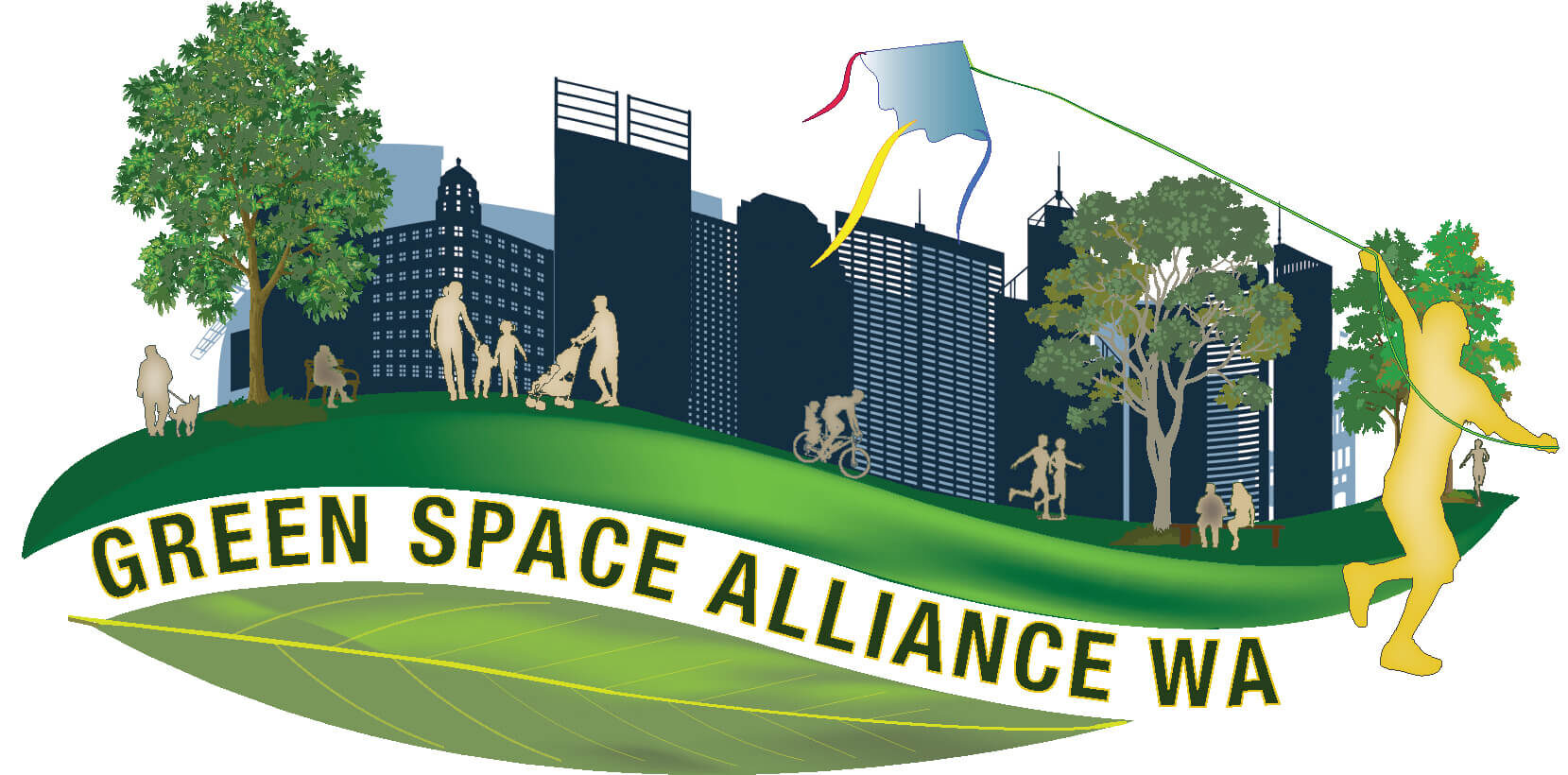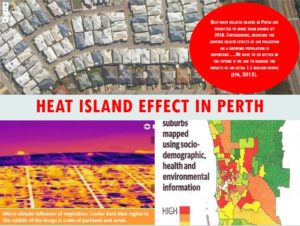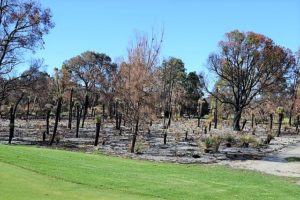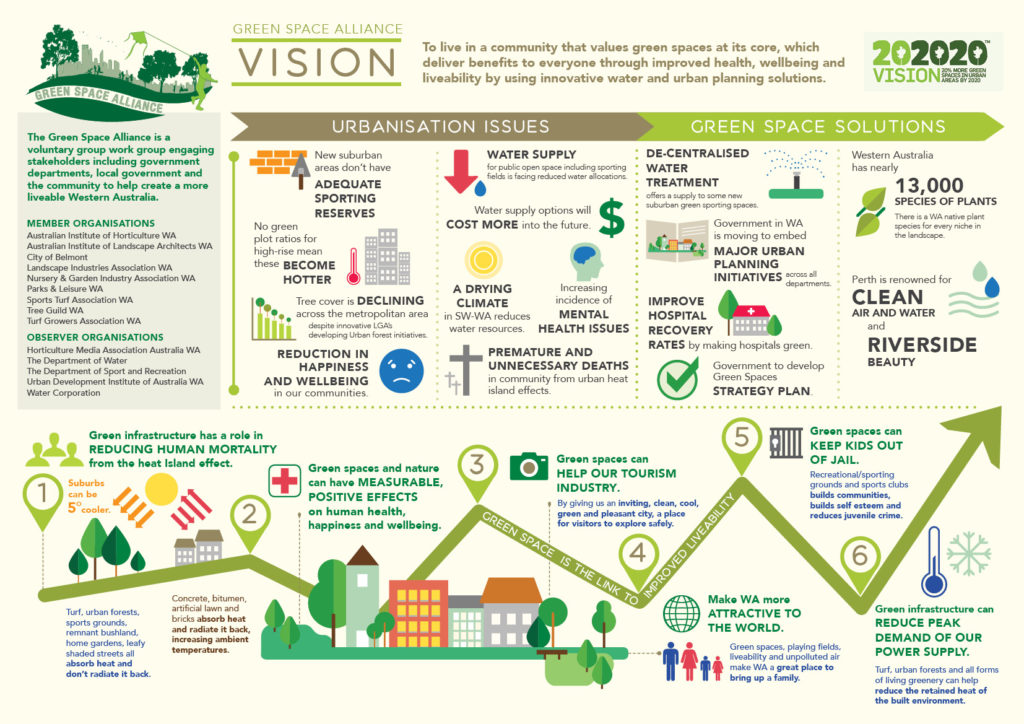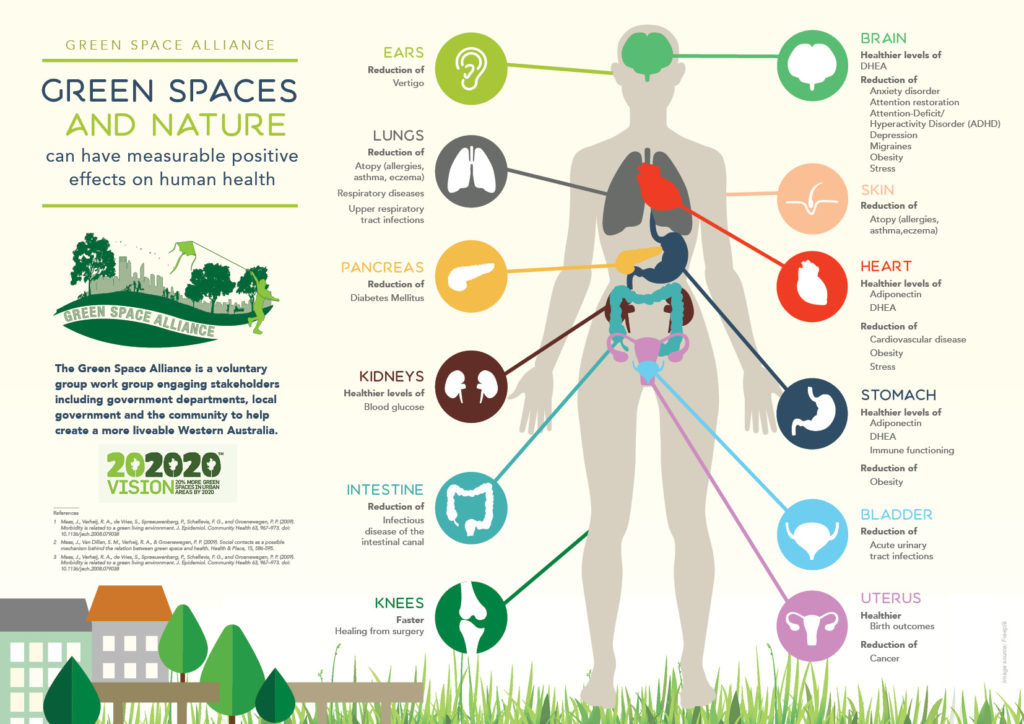About
The Greenspace Alliance was formed in 2014 as an informal industry group to provide a united voice on green space issues to the Western Australian Government, the GSA has matured into a representative alliance with the following vision: “To live in a community that values green spaces at its core, which deliver benefits to everyone through improved health, wellbeing and liveability by using innovative water and urban planning solutions.”
In light of concerns regarding the future of natural green space for Perth and surrounds, a group of horticulture industry members and aligned bodies from Western Australia formed the Green Space Alliance . GSA members include the following; Australian Institute of Landscape Architects (AILA), Australian Institute of Horticulture (AIH), City of Belmont, Landscape Industry Assn WA (LIAWA), Grey Water Industry Group (GWIG), Horticultural Media Association WA (HMA WA), Nursery and Garden Industry Assn WA (NGIAWA), Parks and Leisure Assn WA (PLAWA), Sports Turf Assn (WA) (STA (WA)), Perth NRM, Tree Guild WA and Turf Growers Association WA (TGAWA)
Observers and active participants include; The Department of Sports and Recreation WA, The Department of Water WA, Water Corporation, and The Urban Development Institute of WA (UDIAWA) The GSA has established a vision for the provision of green space in Perth and identified a number of principles to guide the achievement of this vision. The Alliance has released a discussion paper entitled ‘Improving Urban Liveability’, addressing how urban planning and water management policy in Perth impacts liveability, as well as an associated position statement.
The GSA has identified a set of priority principles to support the creation and management of green space in Perth. The GSA believes WA Government policy should:
- Improve liveability by placing greater prominence on green space in the planning process and prioritise the creation of sufficient, quality designed public open space.
- Prioritise water resources, improve water management practices and support ongoing research and demonstration of innovative urban water management solutions to sustain quality green space.
- Recognise Perth’s unique green space and enhance biodiversity protection and management practices.
- Recognise the value of the health and economic benefits green space generates for WA and ensure appropriate resourcing and funding.
- Promote ground-up engagement and communication across the community, industry and government to increase end-user involvement, and support social equity outcomes.
Key facts regarding Perth’s green space
Research shows the ‘triple bottom line’ benefits of urban greening, including:
- Environmental, water and air quality improvements.
- Social improvements such as improved aesthetics, mental wellbeing and physical health.
- Improved business and economic outcomes including increased workplace and community productivity, increased attractiveness of business centres and increased urban property values
Key wellbeing issues impacted by the lack, loss of or deterioration of green spaces include:
- Increased health risks and deaths as a result of the urban heat island effect.
- Reduced opportunities for physical activity and improved mental health outcomes.
- Increased bushfire risk.
- Increased cost of managing public health and community wellbeing.
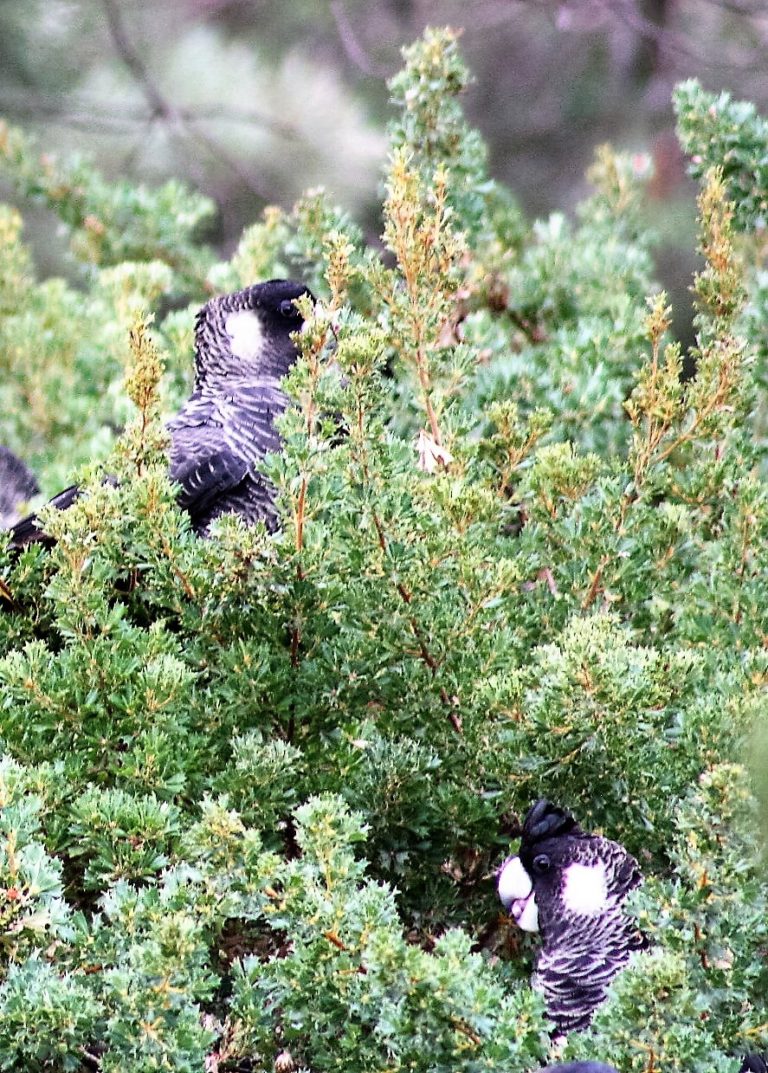
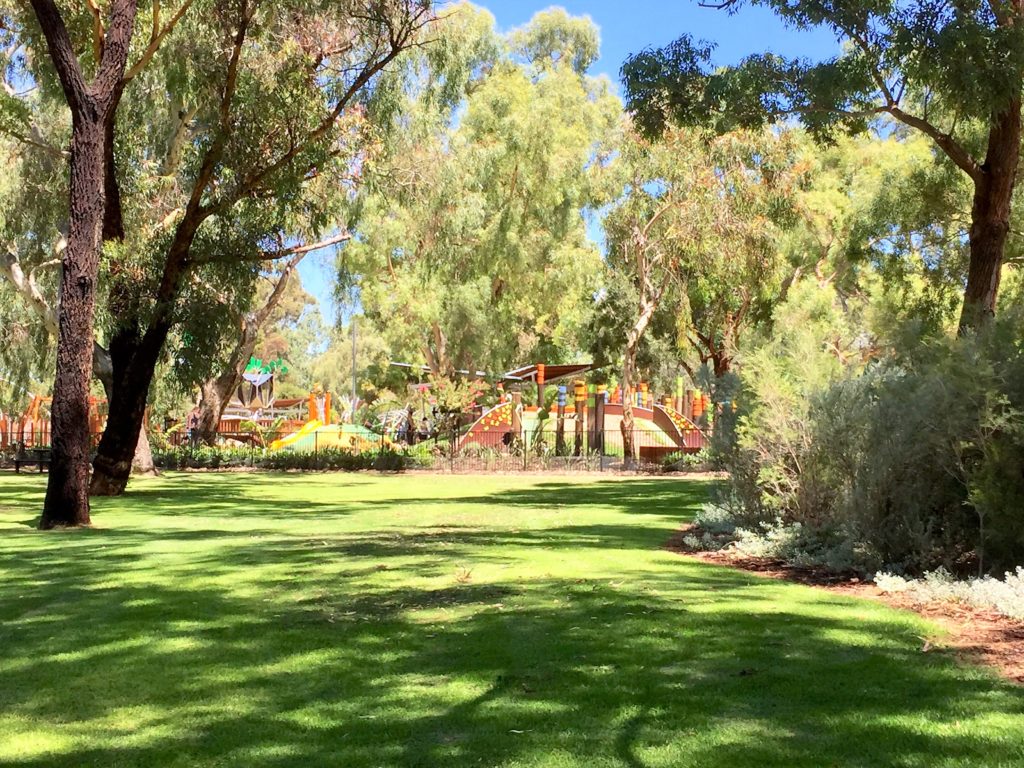
NOW
The Green Space Alliance as an industry alliance, continues to be committed to reversing green space decline, making WA more liveable and resilient for all who reside, visit and cohabit this wonderful shared environment. The GSA will continue to campaign decision makers to:
- Promote existing frameworks for policy development for economic and human benefit. This includes diverse outcomes such as health and wellbeing, climate change and tourism.
- Ensure innovative solutions are implemented for water management and usage. This includes the goal of an empowered industry fully recycling and reusing all water on-site.
- Encourage a whole of government approach utilising existing policy and programs such Living neighbourhoods and other major planning initiatives.
- Support research to provide evidence-based decision-making to drive new ideas such as ensuring green plot allocation in all future planning
- Reissue across government the revised discussion paper
- Advocate for appropriate amounts of green space in WA, to be included in planning and developments regardless, for the benefit of all forever
Government statement
The Department of Sport and Recreation’s Active Open Space (playing fields) in a growing Perth-Peel report stated “It can be concluded with a high degree of certainty that the new suburbs in each of the fringe growth subregions of Perth already have a shortage of active playing fields.” The report further established that by 2031, the total shortfall of open space required for sport (and supporting infrastructure) will be approximately 495ha (Middle et al, 2013).

Links
- GSA Discussion Paper 2018 updated
- GREEN SPACE ALLIANCE POSITION STATEMENT
- Green Urban Heat
- Action for Young Australians Report Parks and open space for the health and wellbeing of children and young people
- The importance of irrigated urban green space- health and recreational benefits perspectives Sth Australia doc
- Public greenspace and life satisfaction in urban australia
- Do low-income neighbourhoods have the least green space a cross
- Greener Spaces Better Places
- Articles on Green space
